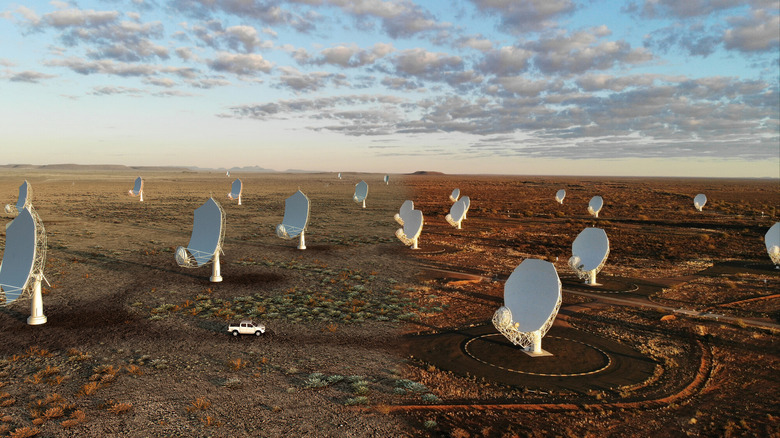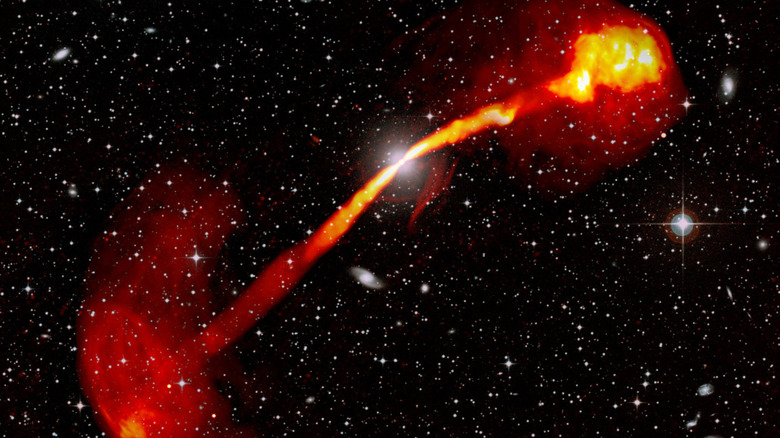Everything We Know About The World's Biggest Radio Telescope
In order to look further out into space and to pick up very faint signals, we need bigger and bigger telescopes. But very large telescopes are difficult and expensive to build and maintain. If they suffer a problem, then the results can be catastrophic, like the Arecibo telescope collapse. One approach to making telescopes that are more powerful, but easier to build and maintain, is to use an array instead of a single dish. Rather than building one enormous structure, you can build many smaller structures and spread them out over a wide area, then link them together into an array so they operate like one giant dish (via Digital Trends).
That's the idea behind what will be the world's biggest radio telescope, the Square Kilometer Array (SKA). Once completed, SKA will consist of thousands of dishes working together, which will have a total collecting area of over one square kilometer. This will help astronomers to peer out into space and collect data faster than ever before, with great sensitivity (via SKA).
SKA is an international project, and it will have two main sites: one in South Africa, and one in Australia. As it is based in the southern hemisphere, it will be able to observe the central region of the Milky Way. The best view of this area is only possible from the south (via BBC). The desert regions of South Africa are a useful location for such a facility because there is relatively little background radio noise, meaning there is less interference with the radio waves the facility is detecting (via SKA telescope).
The science SKA will do
The final array will consist of thousands of dishes. As you can imagine, it takes time to build and set up such a complex system. The project is beginning with precursor facilities like MeerKAT, an array of 64 antennas located in the Meerkat National Park in South Africa (via SKA telescope).
MeerKAT has already been used to study the radio universe, like a stunning image of the galaxy IC 4296 showing the enormous radio jets streaming out from the black hole at its center. Lead author of the research, Jim Condon, said at the time that "only MeerKAT's unique combination of sensitivity, angular resolution, and dynamic range allowed the discovery of these threads, ribbons, and rings" in the galaxy.
The future SKA array will be able to detect even more cosmic radio objects. Researchers will use the array to study topics like the period of the universe's history called the "Cosmic Noon," when the early burst of tremendous star formation in the universe slowed down. Exactly why this happened is still an open question, as researchers originally thought that galaxies had run out of cool gas which new stars are formed from. Newer observations show that many still had plenty of gas available (via MPIA). SKA will be able to help solve this mystery by looking at radio emissions and mapping how these galaxies evolved over time.
This is just one example of the kind of work SKA will do. The array will also be used to investigate topics like the formation of first stars and galaxies, the nature of space and time using pulsars, cosmology issues like the nature of dark energy, and it maybe even search for indications of potential life on other planets.

